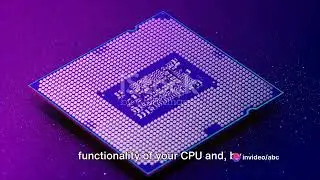Operating System Structure in operating systems (CMP)
Operating System Structure
The structure of an operating system (OS) refers to the organization and design principles that govern how its components interact and function together. A well-defined structure is crucial for efficient resource management, system performance, and ease of maintenance.
#### Key Components of Operating System Structure
1. **Kernel**:
The core component of the OS, responsible for managing system resources such as CPU, memory, and I/O devices.
It operates in a privileged mode, allowing it direct access to hardware.
Functions include process management, memory management, device management, and system calls.
2. **User Interface**:
The layer through which users interact with the OS, which can be command-line (CLI) or graphical (GUI).
Provides tools for users to execute commands, manage files, and configure system settings.
3. **System Libraries**:
Collections of precompiled routines that applications can use to perform common tasks, such as file manipulation and network communication.
These libraries provide a consistent interface for developers, enhancing portability and ease of use.
4. **Application Programs**:
Software applications that run on the OS, utilizing its services to perform specific tasks (e.g., word processors, web browsers).
Applications typically communicate with the OS through system calls.
#### Models of Operating System Structure
1. **Monolithic Structure**:
The OS is a single, large program where all components run in kernel mode.
Advantages: High performance due to direct access to system resources.
Disadvantages: Complexity in debugging and maintenance; a bug in any part can crash the entire system.
2. **Layered Structure**:
The OS is divided into layers, with each layer serving a specific function. Higher layers rely on the services of lower layers.
Advantages: Modularity and ease of maintenance; changes in one layer don’t affect others.
Disadvantages: Potential performance overhead due to the multiple layers of abstraction.
3. **Microkernel Structure**:
A minimal kernel that provides only essential services (e.g., communication, process management), with other services (e.g., file systems, device drivers) running in user space.
Advantages: Increased stability and security; easier to extend and maintain.
Disadvantages: Potential performance penalties due to context switching and inter-process communication overhead.
4. **Client-Server Model**:
A distributed approach where the OS serves requests from client applications, which can run on the same machine or over a network.
Advantages: Scalability and resource sharing; clients and servers can be independently developed and maintained.
Disadvantages: Complexity in managing communication and ensuring security across the network.
#### Key Functions of Operating System Structure
1. **Process Management**:
Handles process creation, scheduling, and termination. It manages the execution of processes and ensures fair allocation of CPU time.
2. **Memory Management**:
Manages memory allocation for processes, ensuring that they have enough memory to execute while preventing conflicts and unauthorized access.
3. **File System Management**:
Provides a way to store, retrieve, and organize files on storage devices, managing permissions and access control.
4. **Device Management**:
Controls and coordinates access to hardware devices, ensuring that multiple processes can use devices without conflict.
5. **Security and Protection**:
Enforces policies to protect data and resources from unauthorized access, ensuring system integrity and confidentiality.
Conclusion
The structure of an operating system is fundamental to its functionality and performance. Understanding the different architectural models and their components helps in appreciating how operating systems manage resources and provide services. As computing technologies evolve, the design of operating systems will continue to adapt, embracing new paradigms like cloud computing, virtualization, and distributed systems.



















